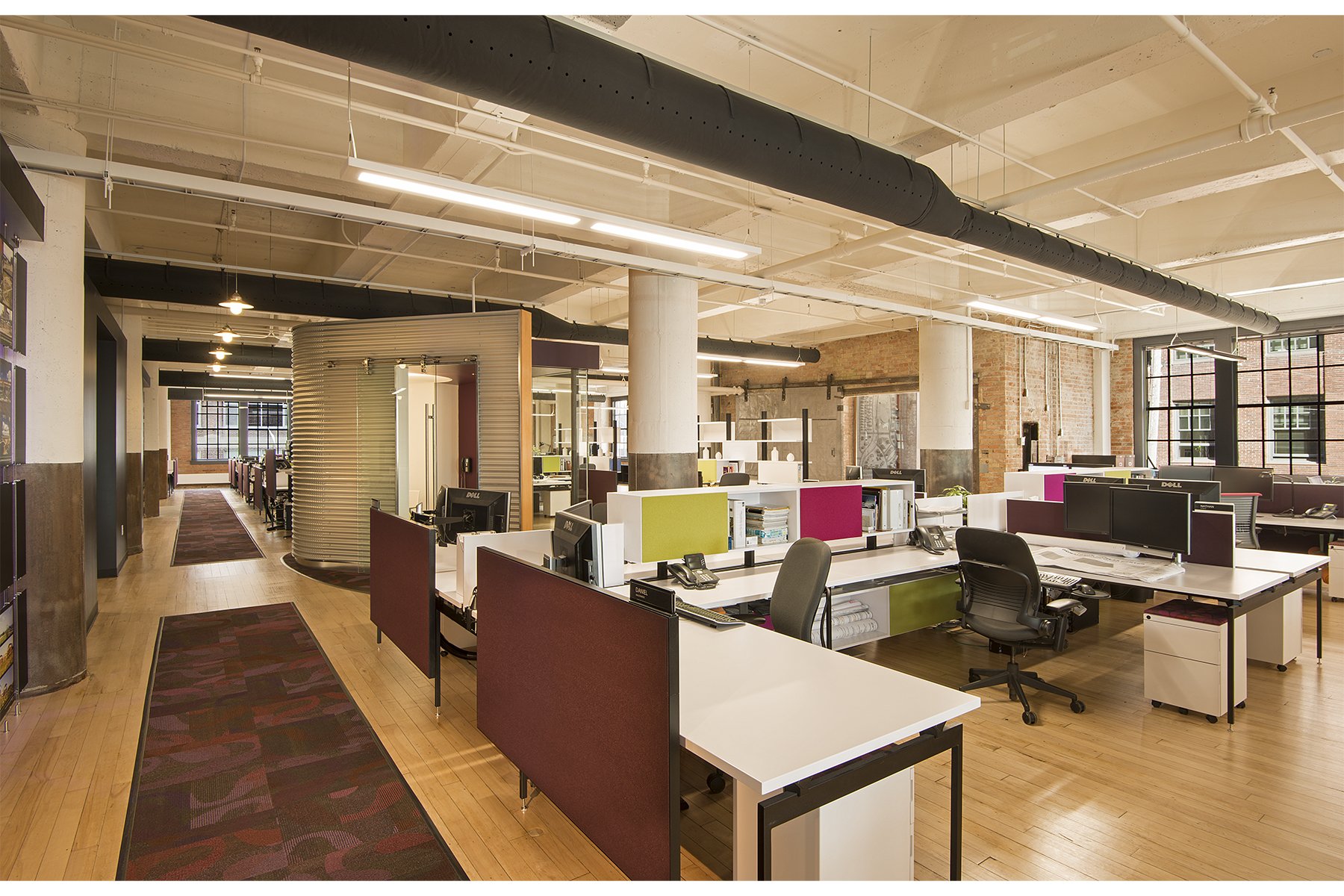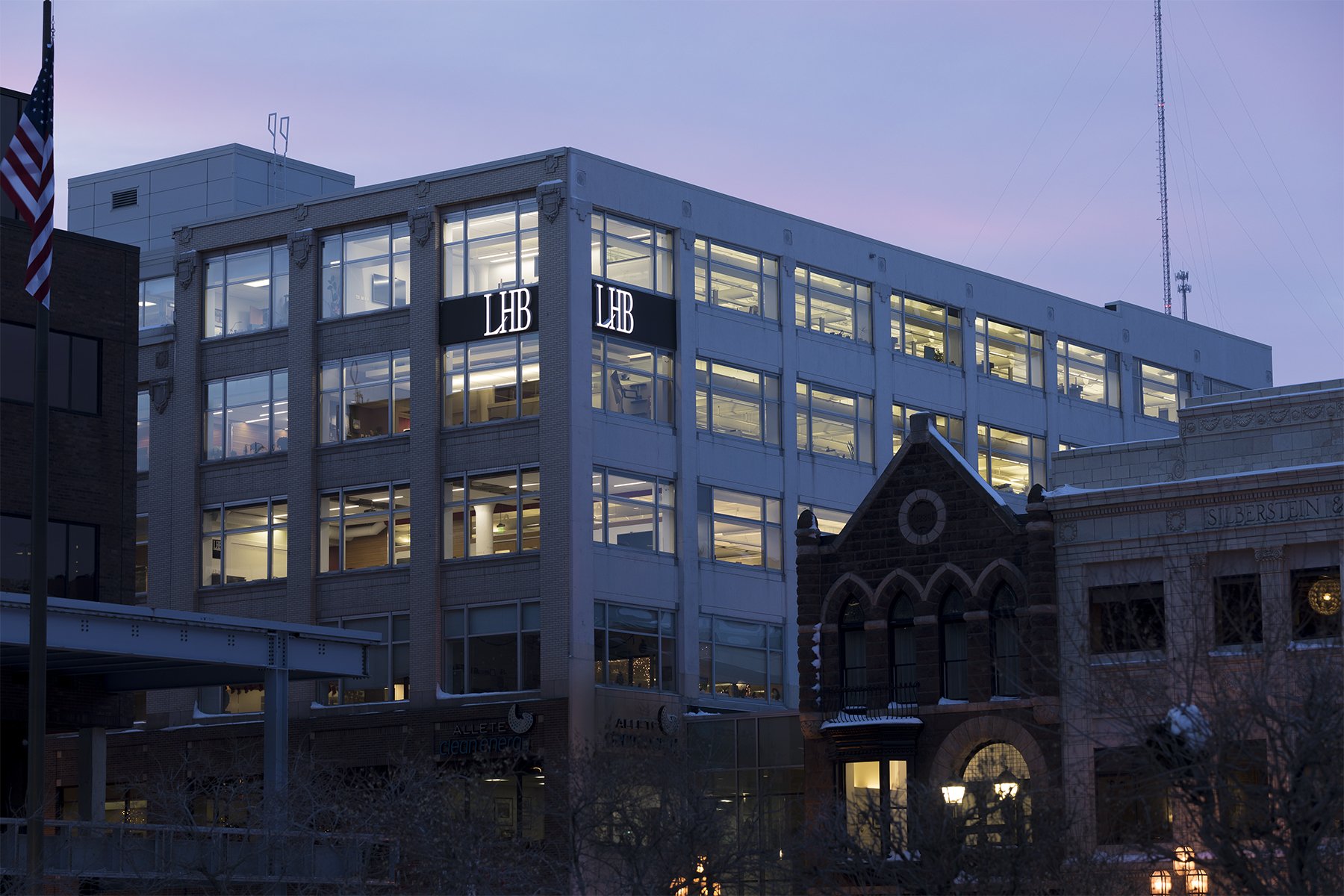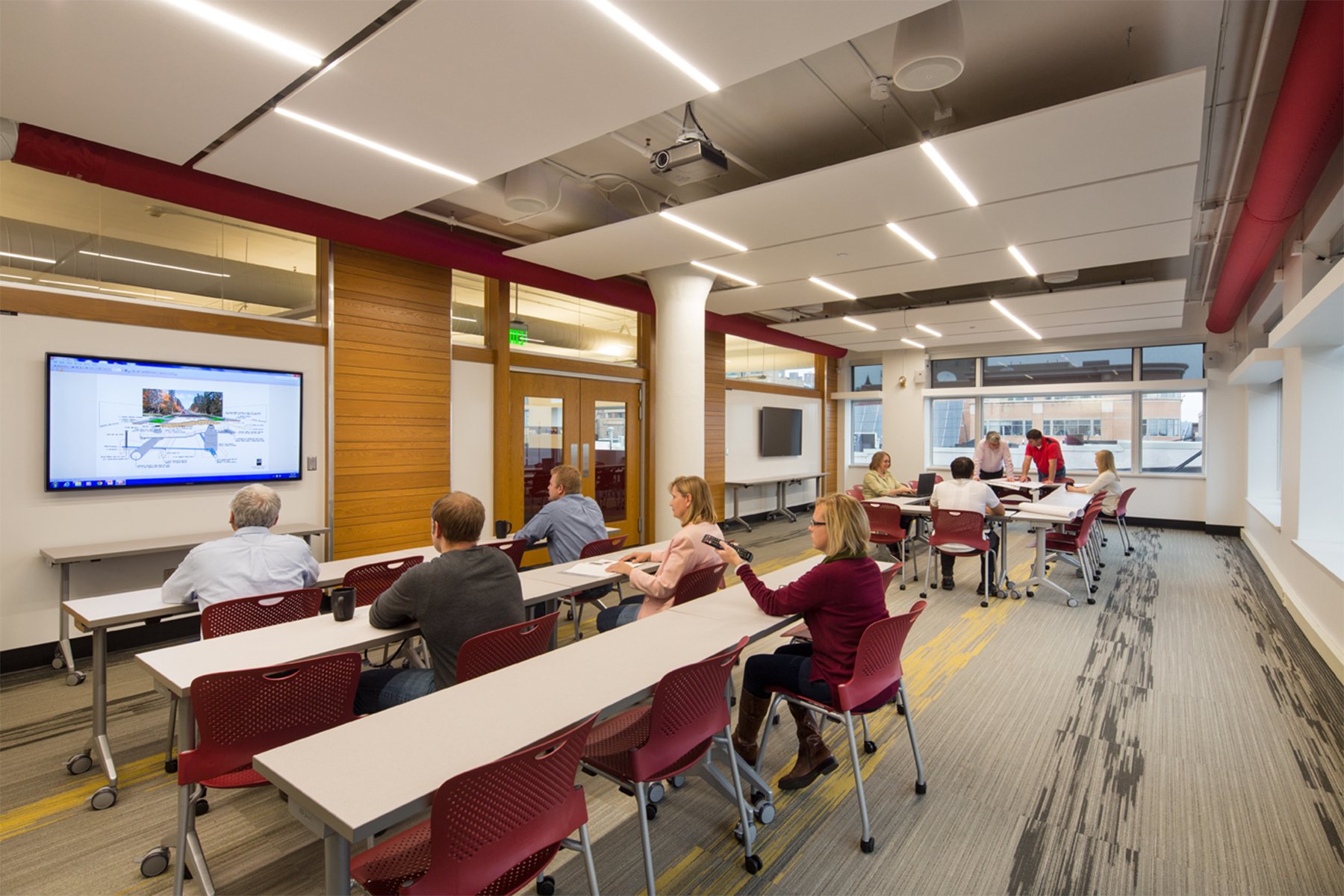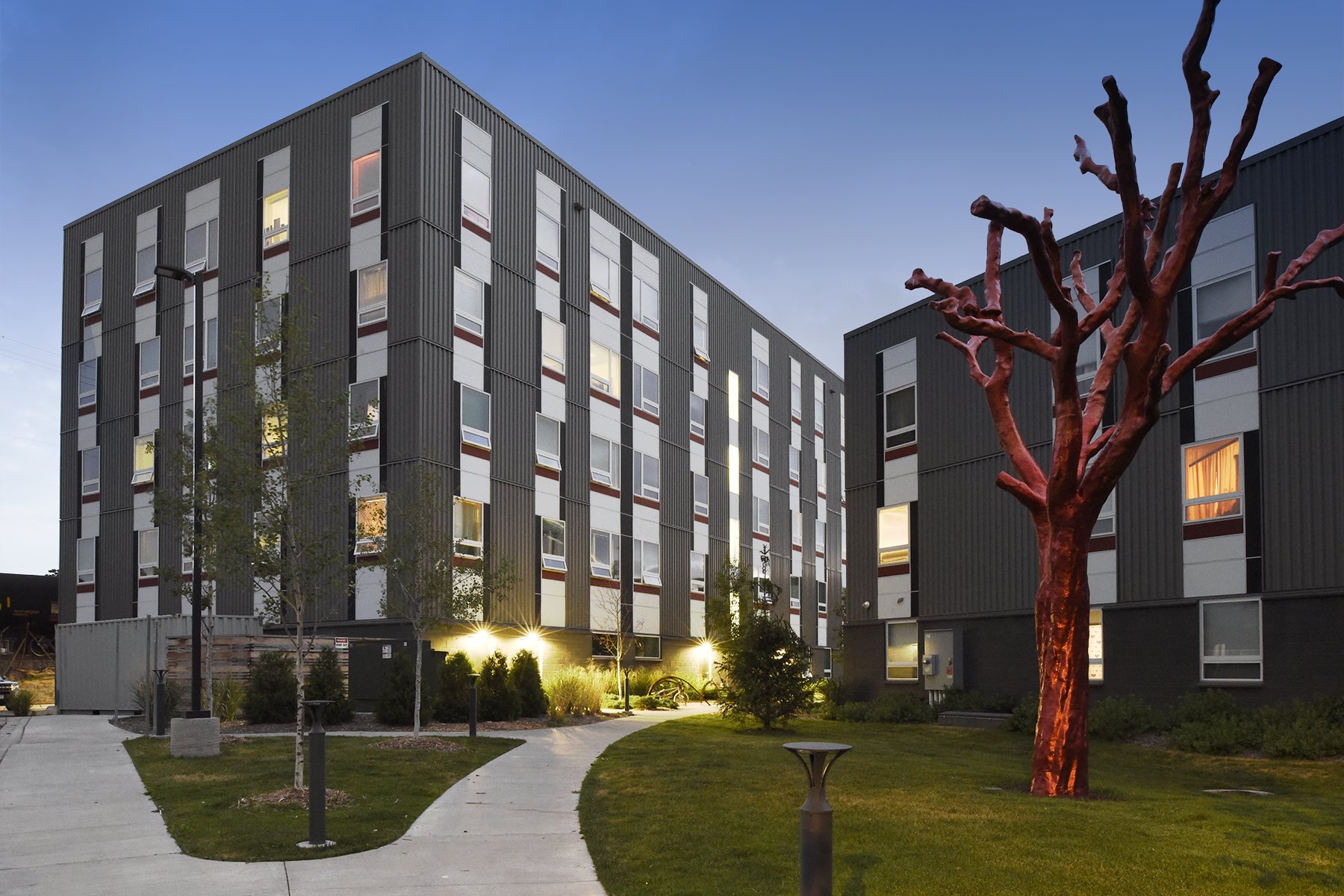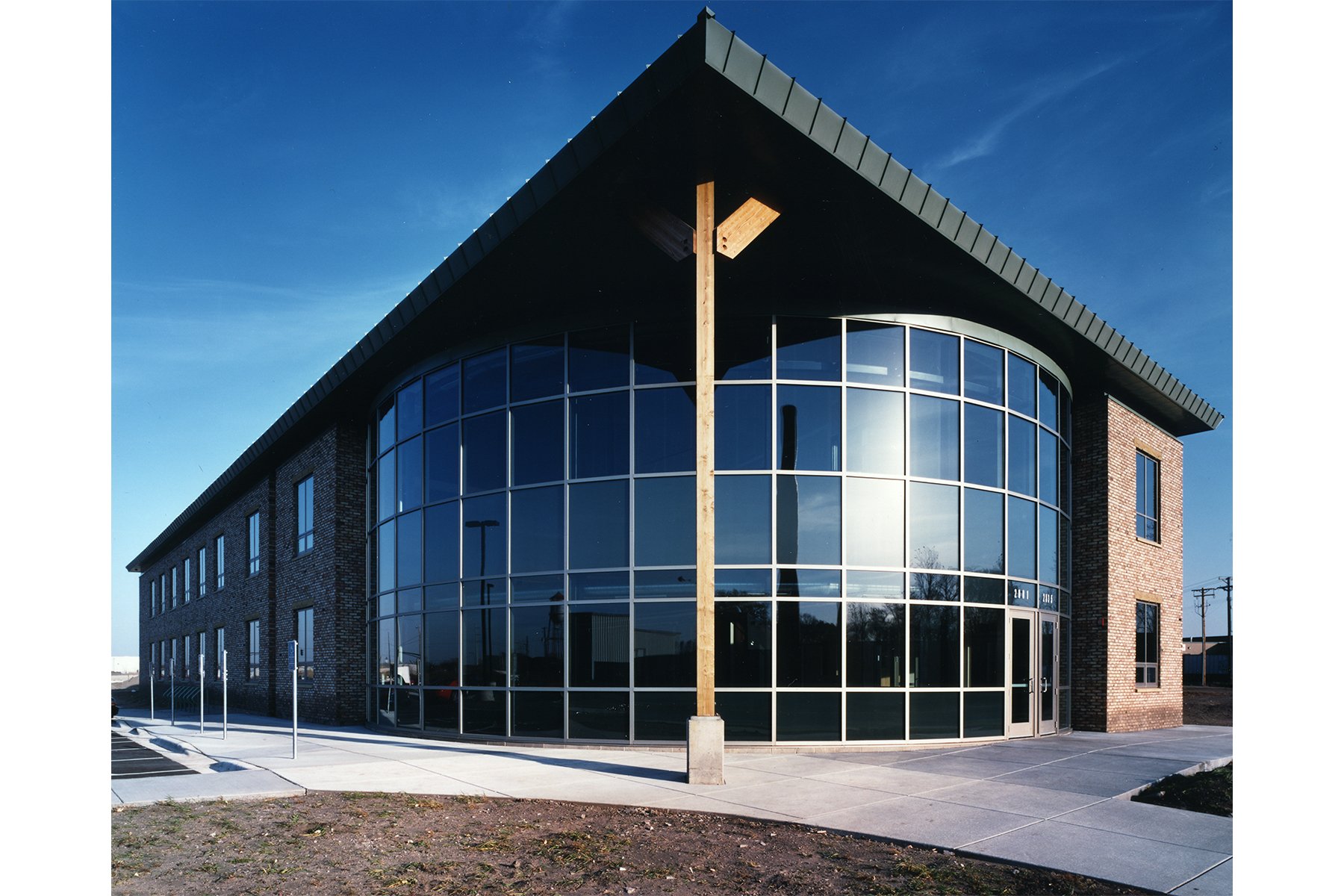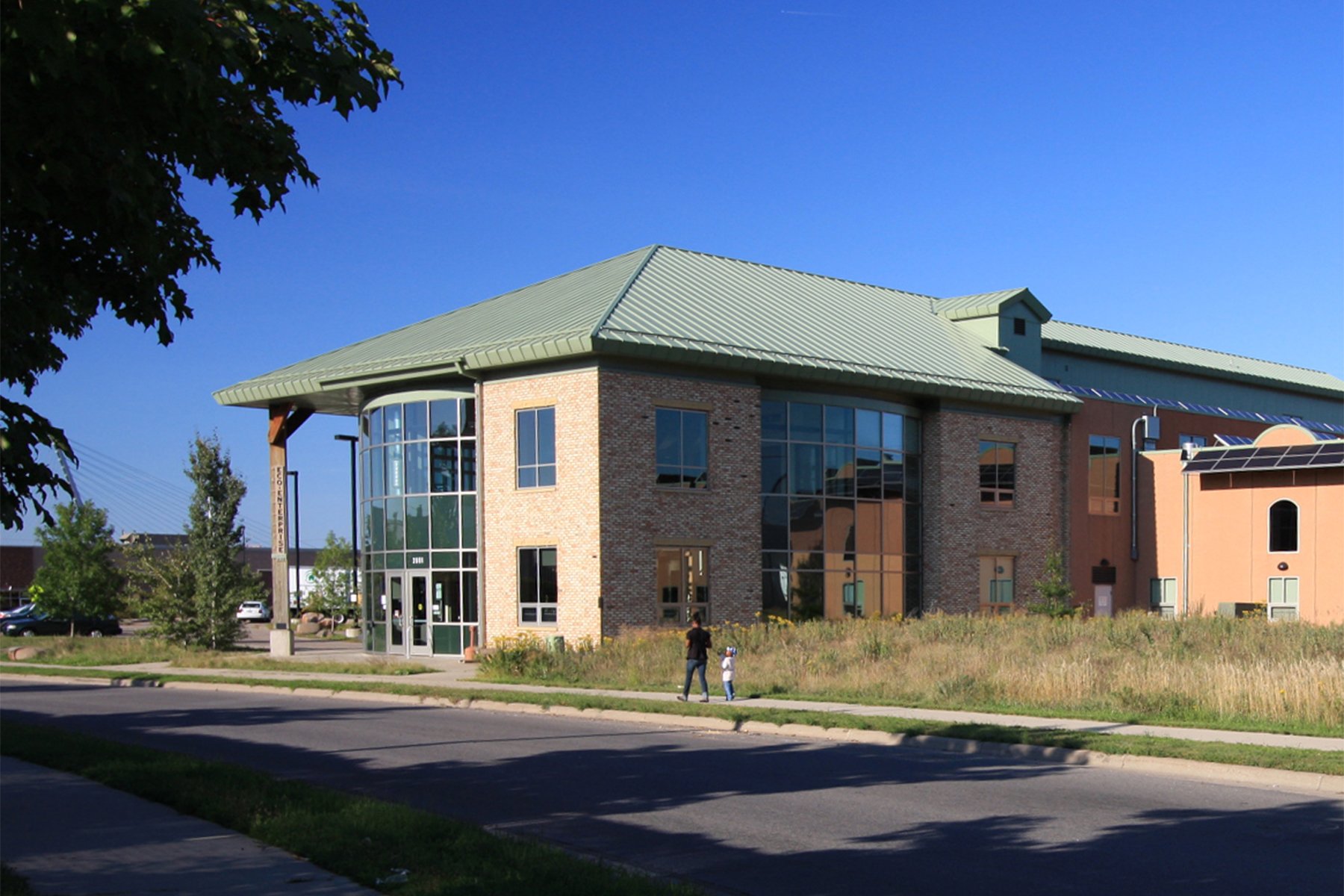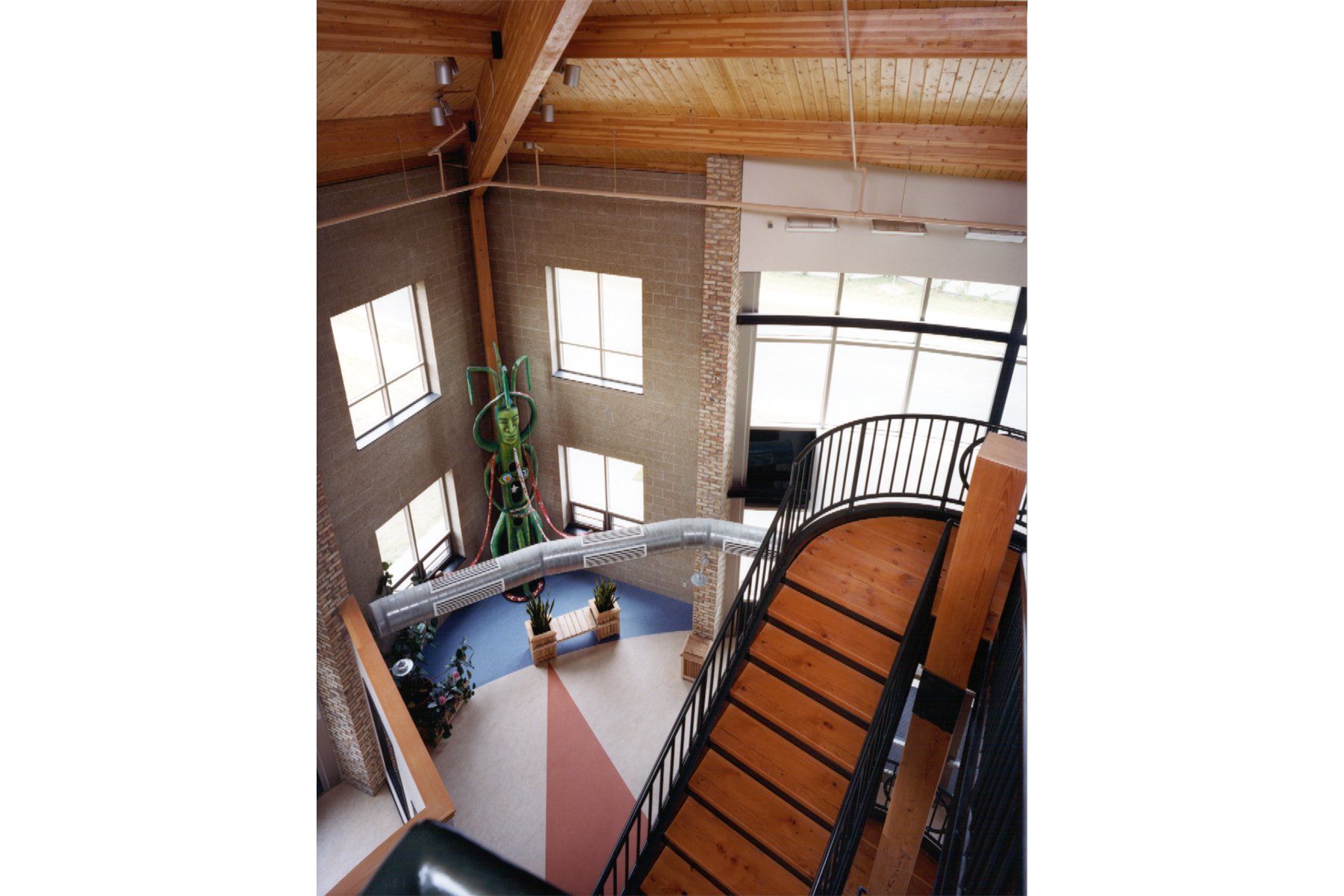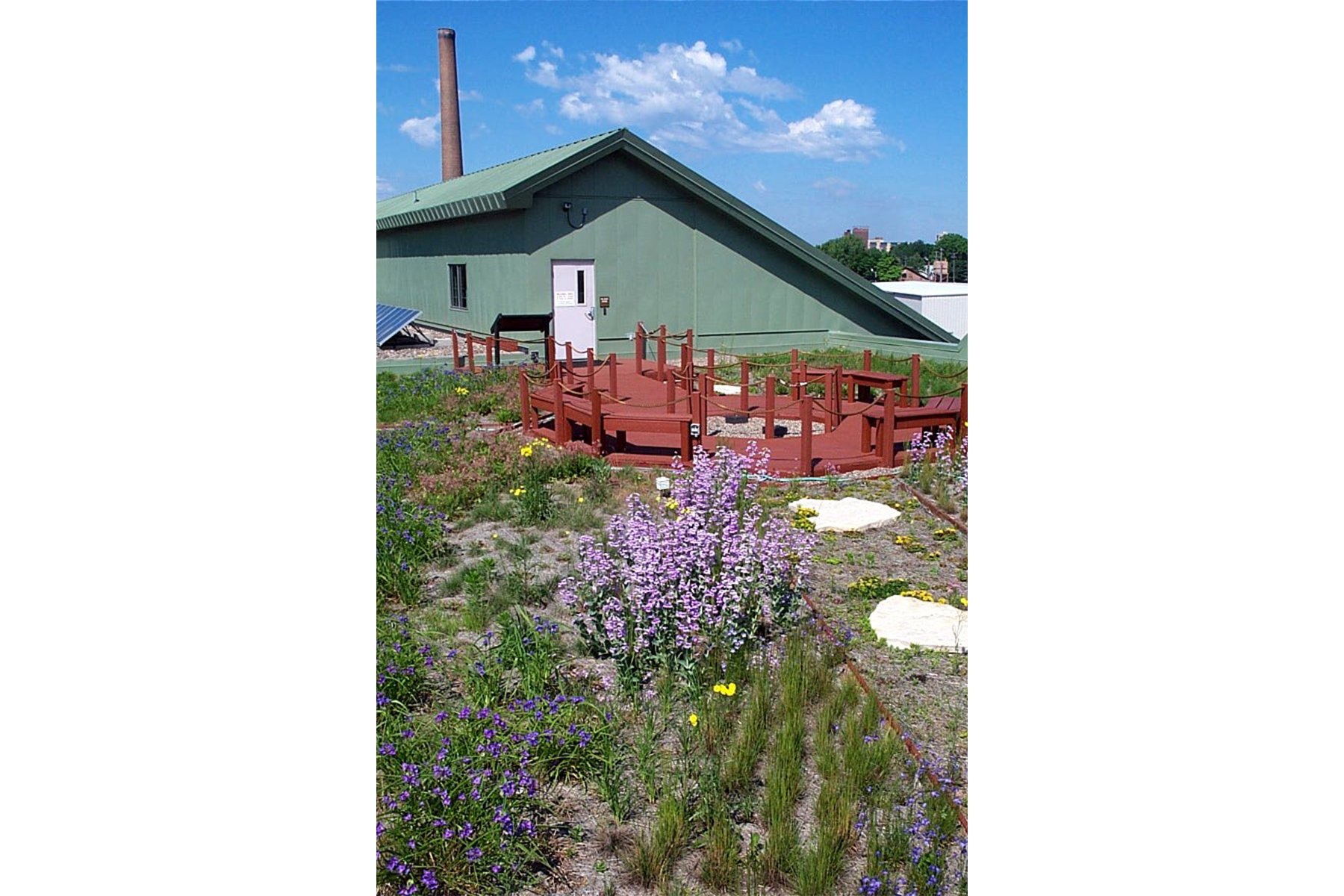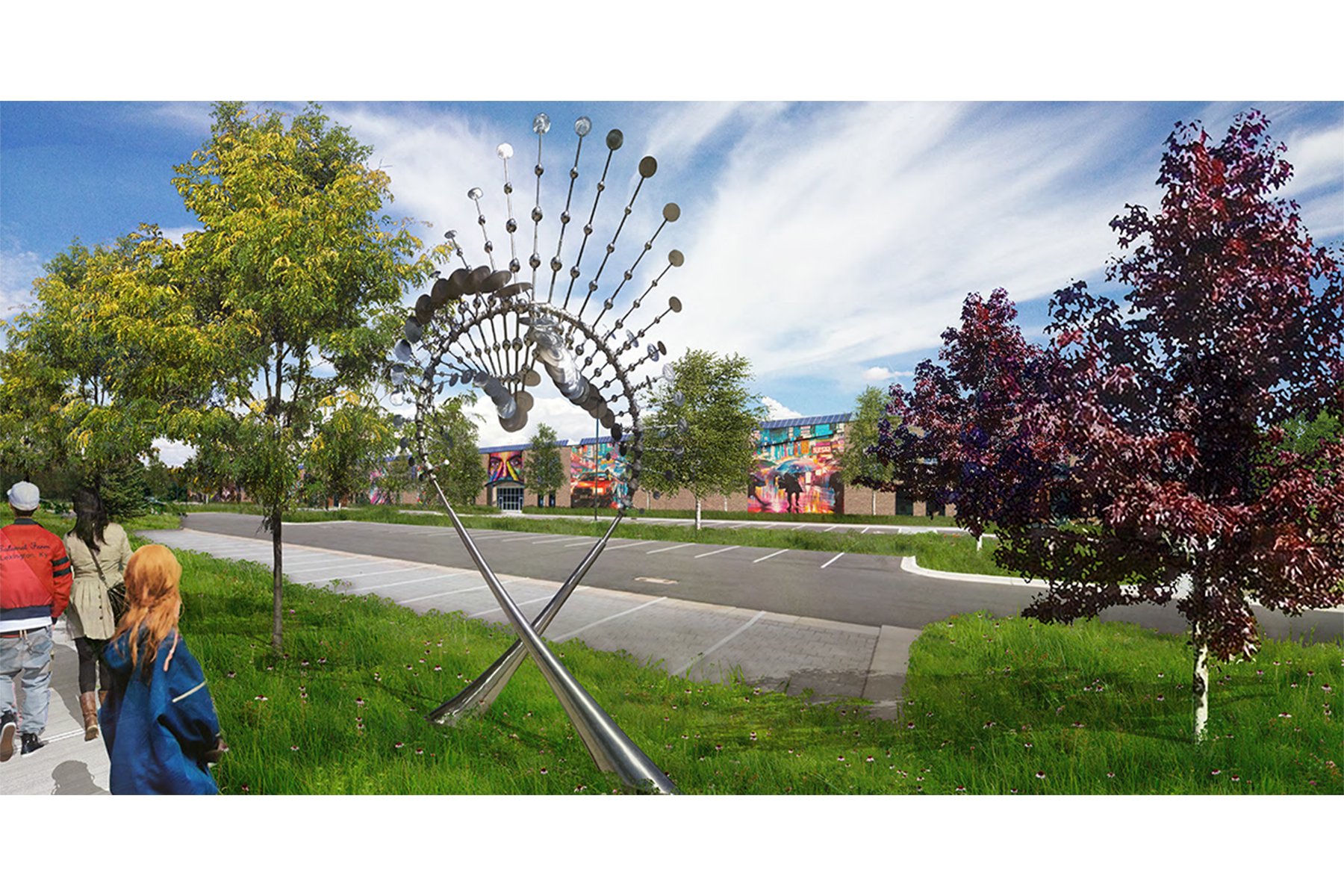How LHB Charted Its Course to Regenerative Design
The engineering and design firm was awarded the 2021 AIA Minnesota Firm Award for its longstanding leadership in sustainability
By Justin R. Wolf | February 24, 2022
A walkway at the Passive House–certified Hook & Ladder apartments in Northeast Minneapolis. Photo by Farm Kid Studios.
FEATURE
When asked to describe LHB, recipient of the 2021 AIA Minnesota Firm Award, AIA Minnesota President Alicia Belton, FAIA, uses words including “selfless.” “They share their expertise in such a way that it defines the framework for thinking about sustainable development differently,” she says.
Founded in Duluth in 1966 by engineer Lauren Larsen, who later partnered with Harvey Harvala and Robert Berquist, LHB started out like any other small shop, leaning on local relationships and leaps of faith. In the ensuing half-century, even as its ranks and regional profile grew and new engineering and design disciplines diversified its portfolio, LHB never lost its penchant for making those leaps.
Images 1 and 2: LHB’s Minneapolis studio in the North Loop. Photos by Dana Wheelock. Images 3 and 4: LHB’s Duluth office on West Superior Street. Photos by LHB.
“Our regenerative design story really begins in 1991,” says LHB CEO Rick Carter, FAIA. Carter recalls a meeting of the firm’s small Twin Cities office—opened in 1989—in which the eight architects, landscape architects, and engineers “pledged to become experts” in all matters related to energy efficiency, resource efficiency, and occupant health. “We said, ‘We’re going to tell people right off the bat, this is our thing, and we’re going to start applying it to projects right away,’” says Carter. “It just resonated with us.”
In a timely alignment, the LEED green building certification program debuted in 1993, and the three pursuits in LHB’s newfound directive “became a catch-all for LEED categories related to water, waste, and materials,” says Carter. He notes that, in the early 1990s, a focus on energy efficiency wasn’t uncharted territory, but the other two were “not yet on the architect’s radar.” Sick building syndrome was a relatively new term, and the practice of measuring and tracking the carbon footprint of buildings was still years away.
Steadily, LHB rose to industry leadership by modeling and measuring the performance of its buildings and registering a series of industry firsts. In 1994, it designed the American Lung Association of Minnesota’s Health House, one of the nation’s first single-family healthy demonstration homes. In 1997, the firm’s Green Institute Phillips Eco-Enterprise Center (now the Greenway Office Building) was the first LEED Pilot project in Minnesota and went on to receive an AIA COTE Top Ten Award. In 2001, LHB authored Sustainable Schools Minnesota, a guide for designing and operating high-performance schools.
“We said, ‘We’re going to tell people right off the bat, this is our thing, and we’re going to start applying it to projects right away.’ It just resonated with us.”
The firm’s early involvement in developing sustainable design frameworks led to LHB being the only design firm on the team selected in 2002 to create and manage Minnesota’s B3 (Buildings, Benchmarks, and Beyond) program for all state-funded projects. In 2010, with the goal of expanding sustainable design planning beyond buildings to communities, LHB created the Regional Indicators Initiative, a database that measures carbon emissions and performance metrics for cities throughout the state. The firm’s recently completed Hook & Ladder project in Northeast Minneapolis is the first Passive House–certified multifamily building in this climate zone.
If one were to compile a decades-long timeline of sustainability benchmarks in Minnesota, nearly every year would include a notable contribution from LHB. And yet, the firm has managed to keep relatively quiet about the whole thing.
“It’s not our nature to brag,” says Integrative Design Team leader Michael Fischer, AIA. “As soon as we learn something, we share it.” Fischer cites the widely used B3 guidelines and the Regional Indicators database as evidence of LHB’s broader influence, even though the firm’s involvement in building these tools from scratch rarely gets mentioned. “It’s not about marketing for us—it’s about making a real impact,” he says.
Image 1: The Passive House–certified Hook & Ladder apartments in Northeast Minneapolis. Photo by Stephan Faerber. Images 2–5: The Green Institute’s Phillips Eco-Enterprise Center (now the Greenway Office Building) in St. Paul. Photos by LHB. Image 6: The Heights. Concept imagery by LHB.
Another industry first—and more real impact—is now in the works.
The St. Paul Port Authority has made it a priority in recent years to secure brownfield sites in the city, clean them up, and transform them in developable lots. One such site is the 112-acre property where the Hillcrest Golf Course once stood. This “radically contaminated” site, polluted “stem to stern with mercury,” according to Port Authority vice president for redevelopment Monte Hilleman, is slated to become the single largest land development initiative undertaken by the agency. With help from LHB, the project is setting its sights on becoming one of the world’s first 100-percent carbon-neutral communities.
LHB’s involvement in the development goes well beyond site planning and soil mitigation. “They figured out the positive synergies,” says Hilleman. In his view, so-called sustainable communities “generally have not done a good job of balancing equitable and regenerative development. [The planners] strive to do the right thing for the environment but often leave behind those who most need the types of assistance these projects can provide. A carbon-free community should also mean reducing social and economic disparities.”
Carter knows that bringing the Hillcrest vision to life will “require the greenest buildings we’ve ever done—LEED Platinum, Passive House, or better. But more important, all carbon emissions will be offset by onsite renewables; there will likely be a district energy system, electrified transportation, and so on. We’ve already done the math. This could absolutely be the most stellar project in Minnesota, if not the entire country.”
Carter speaks in a pragmatic, no-nonsense tone, yet his words reveal yet another leap of faith. Happily, those seem to be his firm’s stock and trade.



